Did you know water damage affects 1 in 50 U.S. households every year, according to the Insurance Information Institute? The most expensive damage often starts small — with unnoticed leaks or hidden dampness. Detecting these signs of water damage early can reduce restoration costs by up to 90%. If you’re wondering how long recovery takes, our Water Damage Restoration Timeline explains the full process from inspection to drying and rebuilding.
This article shows how to:
- Spot visible and hidden signs of water damage.
- Identify common causes and their solutions.
- Use tools and inspections to confirm hidden leaks.
- Document properly for repairs or insurance claims.
Let’s begin with what your walls, floors, and ceilings might already be telling you.
What Are the Most Obvious Signs of Water Damage in a Home?
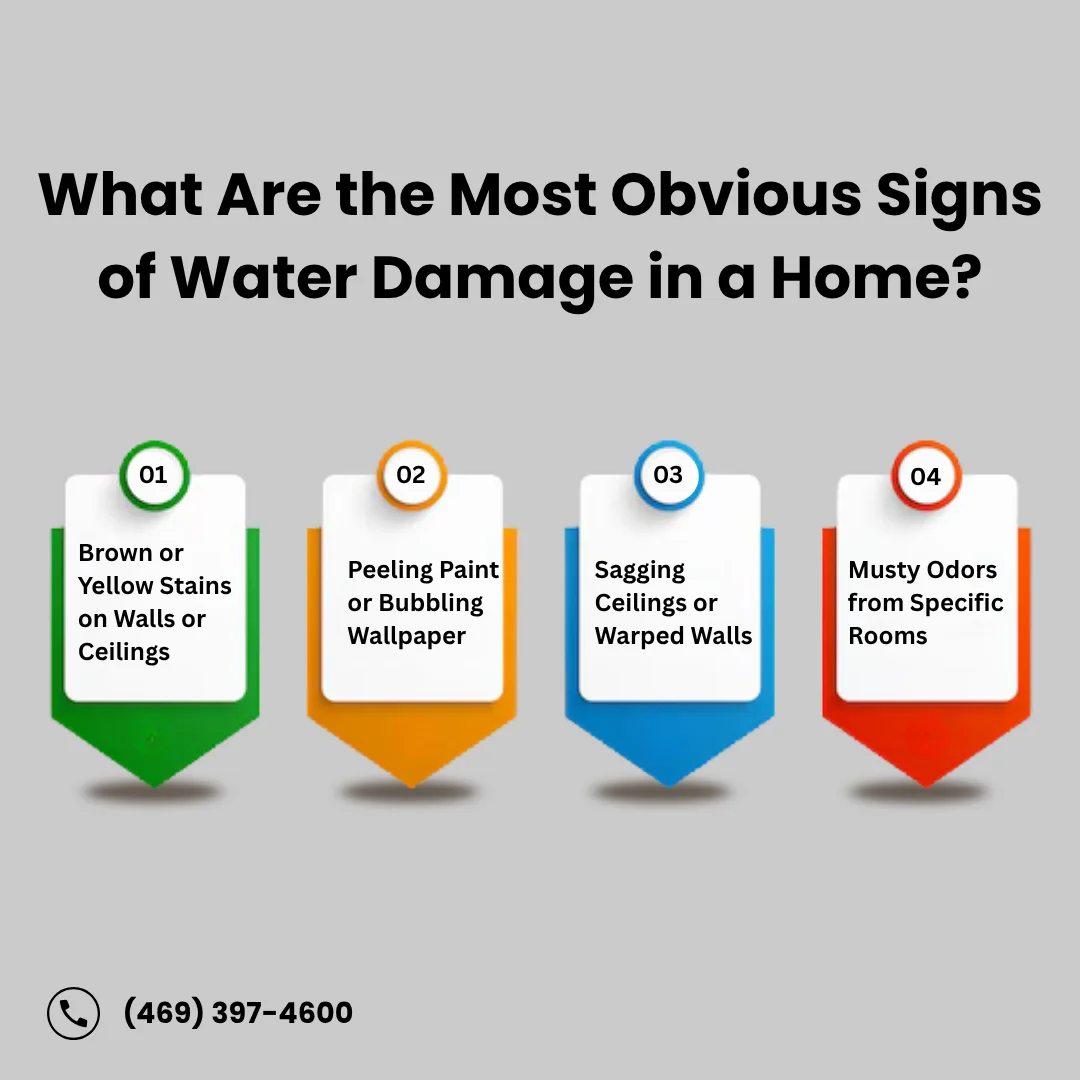
Surface-level damage is more than just an eyesore. Often, it’s a symptom of a bigger issue lurking underneath. Recognizing these water damage signs early can save you thousands in restoration.
1. Brown or Yellow Stains on Walls or Ceilings
Discolored marks, especially circular brown or yellow spots, are a result of water absorbing minerals and tannins before it surfaces. These stains often appear after roof leaks or pipe drips. Drywall and insulation can become soaked, sagging under weight. A yellow stain on a white ceiling isn’t just unappealing; it’s your home asking for help before internal damage becomes more severe.
2. Peeling Paint or Bubbling Wallpaper
When trapped water vapor seeps into wall surfaces, it causes paint to bubble and wallpaper to peel. This occurs when the adhesive weakens due to excessive internal moisture. You may also notice a drywall bulge or discoloration where water damage has collected. What starts as a minor cosmetic flaw can develop into a structural issue if not promptly investigated and addressed.
3. Sagging Ceilings or Warped Walls
Moisture makes building materials, such as gypsum boards, heavy and unstable. As water accumulates, ceilings sag under the weight, and walls may buckle or warp. Fasteners rust, and seams begin to separate. A sagging ceiling is never just cosmetic; it’s a red flag for deeper, ongoing structural damage that demands urgent attention to avoid collapse.
4. Musty Odors from Specific Rooms
A persistent earthy smell indicates mold or hidden leaks, often in walls or vents. If you detect it, consult professionals offering water damage restoration in Flower Mound to locate and fix the source.
What Are the Hidden Signs of Water Damage?
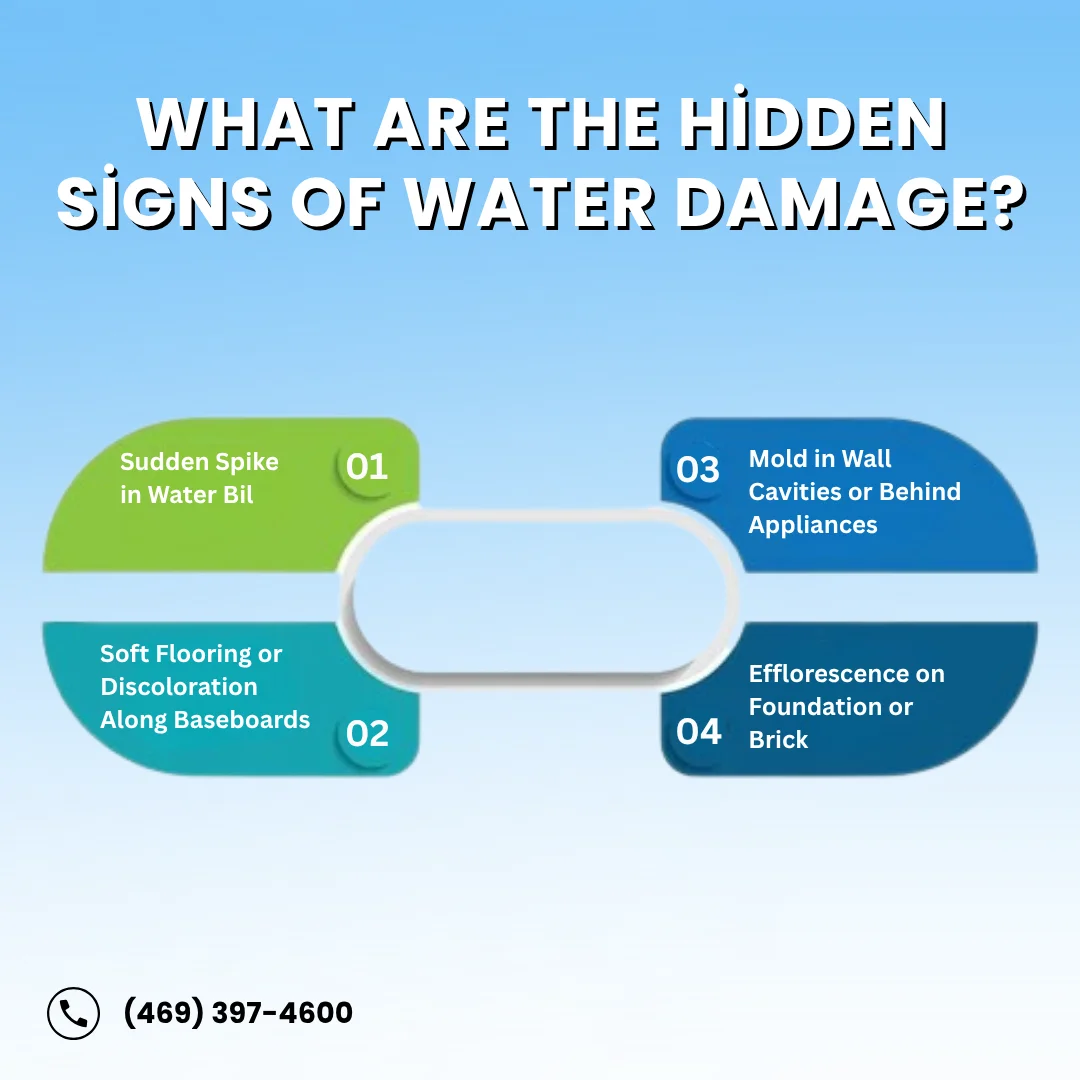
Not all damage is visible to the naked eye. Some of the most costly water damage signs happen silently behind walls or under flooring. Here’s what to look out for.
1. Sudden Spike in Water Bill
If your water bill suddenly increases without an apparent reason, you’re likely paying for a leak you can’t see. Hidden plumbing leaks in crawl spaces or behind drywall increase your usage slowly but steadily. Monitor your usage meter over a few days to confirm. Even slow drips can waste hundreds of gallons monthly and create hidden water damage that’s costly to uncover and repair.
2. Soft Flooring or Discoloration Along Baseboards
When you notice softness in hardwood, laminate, or tile flooring, or subtle color changes along baseboards, it likely means hidden moisture. Capillary action allows water to creep upward, leading to material rot. A pin-type moisture meter can confirm the extent of the issue. Ignoring these signs can lead to warped subfloors and structural weakening, which is expensive to reverse.
3. Mold in Wall Cavities or Behind Appliances
Behind your fridge, washer, or under sinks, mold may flourish silently. Especially hazardous is Stachybotrys chartarum, commonly known as black mold, which the CDC warns can grow in as little as 48 hours. Hidden moisture becomes a breeding ground for spores, impacting indoor air quality. Don’t wait for visible mold; use a flashlight or moisture sensor to check these vulnerable zones.
4. Efflorescence on Foundation or Brick
The white, chalky film you see on your basement wall or exterior brick is efflorescence, a result of salt deposits left behind as water evaporates. This isn’t just cosmetic. It suggests persistent moisture or hydrostatic pressure forcing water through porous masonry. Efflorescence is one of the easiest-to-miss signs of hidden water damage and a reliable indicator of leaks in foundations.
How Do You Detect Water Damage Without Tearing Down Walls?
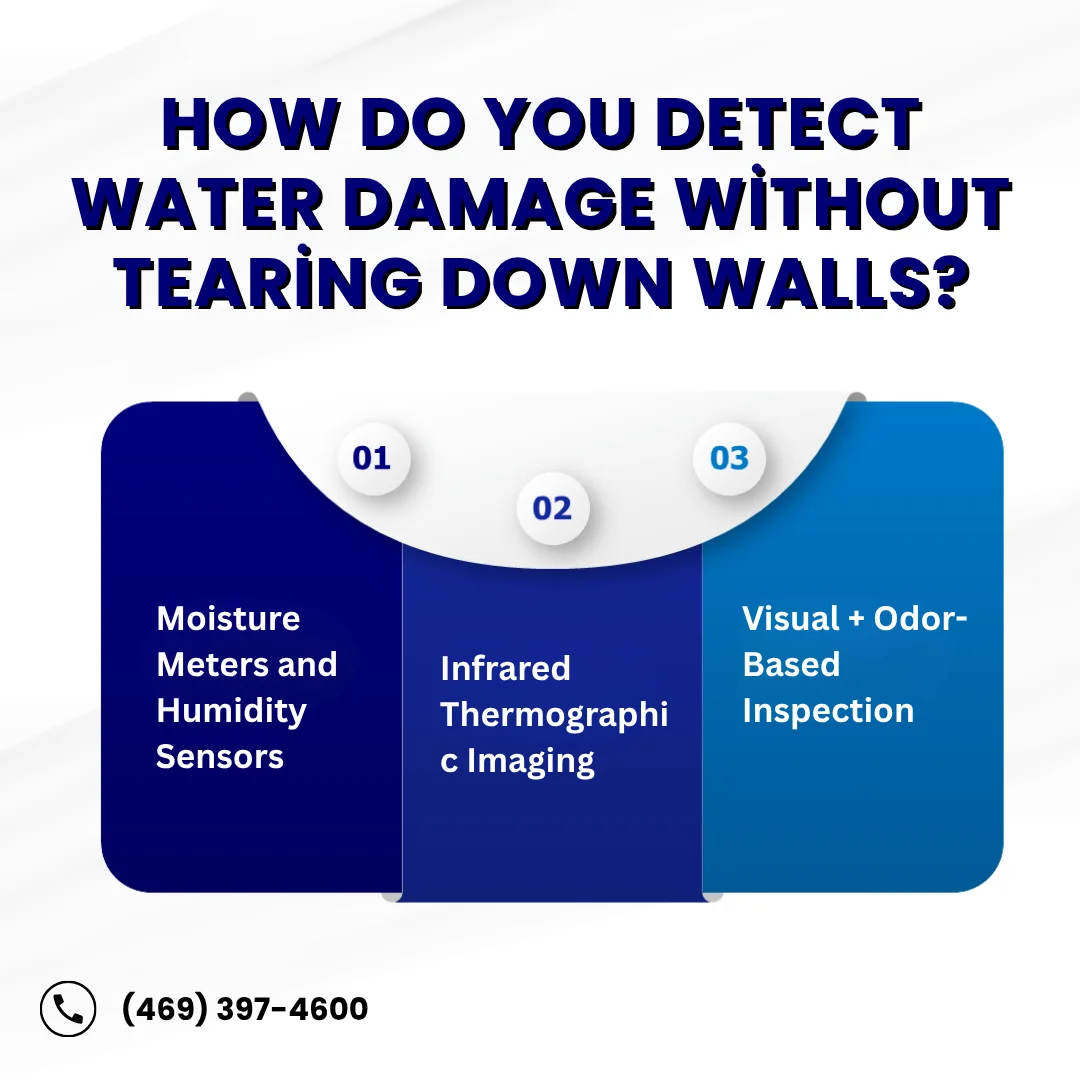
You don’t always need to break through walls to uncover moisture. Non-destructive tools and inspections reveal hidden dampness within materials or beneath surfaces.
1. Moisture Meters and Humidity Sensors
Moisture meters come in two types, pin and pinless, and are used to measure water content in walls, floors, and ceilings. Thermo-hygrometers monitor indoor humidity to flag areas where mold may form. Restoration pros use these tools to detect moisture early, making it possible to act fast and limit water damage before it spreads.
2. Infrared Thermographic Imaging
Infrared cameras identify areas where temperatures differ due to water evaporation. This technique detects cold spots, thermal bridges, and distorted R-values caused by hidden moisture. It’s a favorite among inspectors because it gives a clear visual map of leaks without damaging property. If you suspect a leak, thermal imaging offers a non-invasive confirmation.
3. Visual + Odor-Based Inspection
Sometimes your senses are the first line of detection. Water stains, material bloom, condensation trails, and musty odors indicate leaks. While not as precise as tools, a visual inspection combined with an odor test can help identify areas for deeper testing. Use it alongside meters for a fuller picture of potential hidden water damage.
What Causes the Most Common Types of Water Damage?
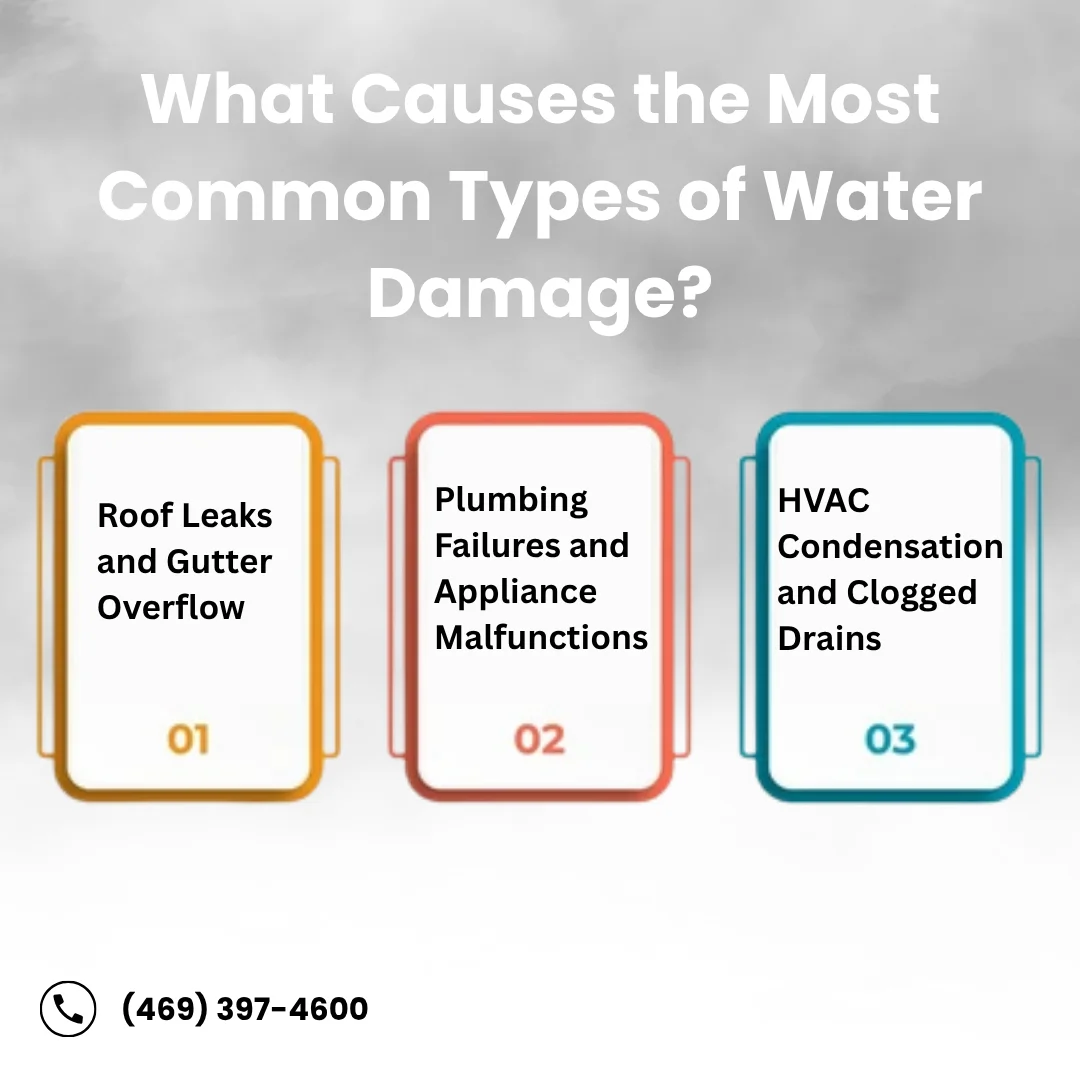
Water doesn’t just appear; it comes from somewhere. These are the most common triggers for water damage across homes, often due to neglect or aging systems.
1. Roof Leaks and Gutter Overflow
Poor roof maintenance and clogged gutters lead to major leaks, especially near attics and wall top plates. Rainwater can pool, then drip through seams during storms or freezing cycles. Damaged shingles, loose flashing, or blocked downspouts worsen the issue. Schedule seasonal checks to avoid water trickling into unseen cavities and causing rot or mold growth.
2. Plumbing Failures and Appliance Malfunctions
More than 70% of water damage claims result from failed plumbing or leaking appliances. A cracked valve, burst pipe, or loose washer hose can flood areas in minutes. If you’ve got old piping or haven’t replaced appliance hoses in years, consider proactive upgrades. Prevention is easier than cleaning up after a soaked floor or mold outbreak.
3. HVAC Condensation and Clogged Drains
Your HVAC unit can be a hidden source of water damage. If your condensate pan overflows due to a clog, water may seep through the ceilings or walls unnoticed. Dehumidifier failures and blocked drain lines are also common culprits. Routine servicing helps detect these issues before they cause expensive internal damage and structural compromise.
Signs of Water Damage and What They Indicate
|
Sign |
Probable Cause |
Damage Type |
Inspection Tool |
| Yellow ceiling stain | Roof leak | Surface moisture | Moisture meter |
| Warped floorboard | Subfloor leak | Structural movement | Infrared camera |
| Musty smell in room | Mold behind wall | Bio-contamination | Odor path, humidity |
| Peeling paint | Condensation/moisture seep | Material failure | Visual + thermal scan |
| Spike in water bill | Plumbing leak | Concealed damage | Consumption audit |
Each symptom is a signal. Matching it with the correct diagnostic method accelerates response and reduces long-term costs.
What Should You Do Immediately After Spotting Water Damage?
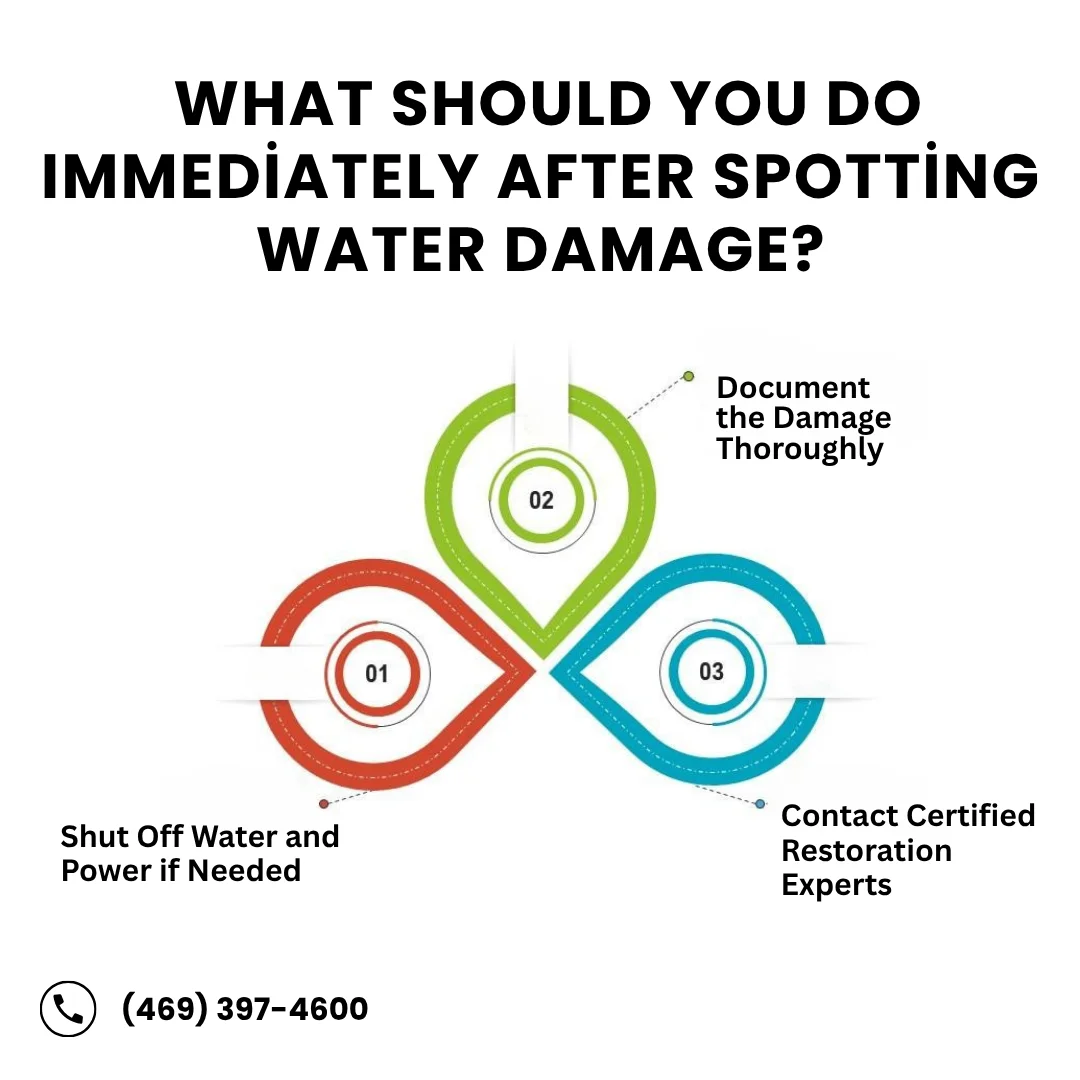
Once you notice signs of damage, don’t wait. Every hour matters in minimizing cost, contamination, and claim eligibility.
1. Shut Off Water and Power if Needed
Start with safety. If water is near electrical components, turn off the power at the circuit breaker. Then locate and turn off the main water valve. This prevents further flooding and reduces the risk of shock. Mark all valve tags and circuit boxes clearly so you can act fast next time. Early shutdown prevents more widespread water damage and keeps your home secure.
2. Document the Damage Thoroughly
Before cleaning up, capture the evidence. Take time stamped photos, videos, and humidity readings. Keep a log of conditions and dates to provide to your insurance provider. The more proof you collect, the easier it is to file a policy claim and reduce your deductible. Organize it all digitally so it’s ready if and when needed.
3. Contact Certified Restoration Experts
Don’t rely on DIY methods if the damage is major. Contact certified technicians with credentials from the IICRC, EPA, or other relevant organizations specializing in mold remediation. They’ll handle water extraction, drying, sanitization, and anti-microbial fogging. Acting quickly means avoiding long-term mold growth, odor issues, and structural weakening that can turn into expensive repairs.
If damage extends beyond repairs, professional help from home remodeling and restoration in Prosper ensures your property is fully restored — structurally and aesthetically.
How Can You Prevent Water Damage from Returning?
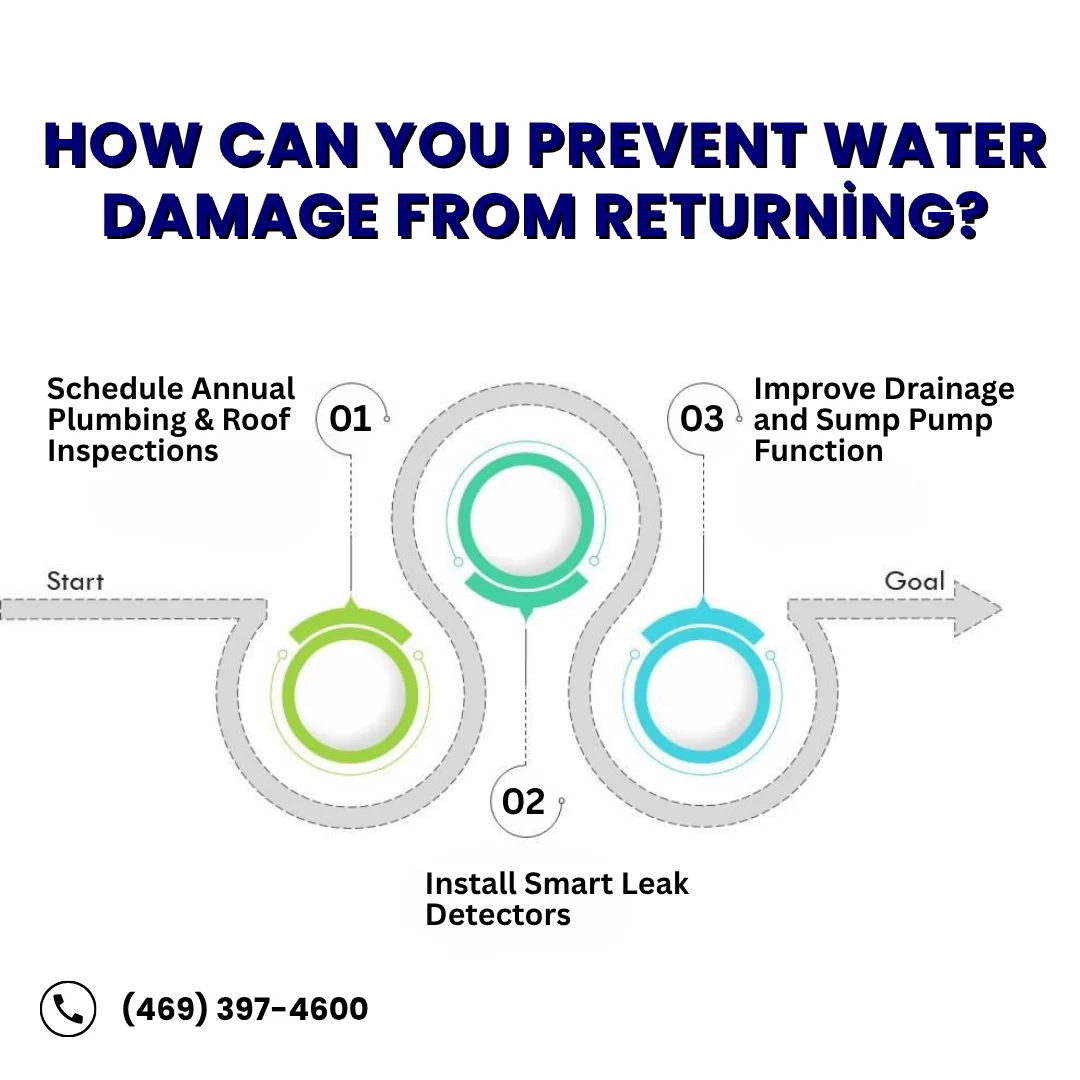
Once fixed, keep it that way. The steps below help prevent recurring water damage.
1. Schedule Annual Plumbing & Roof Inspections
Routine inspections cost far less than emergency repairs. Check flashing, inspect the roof sealant, and run pipe pressure tests annually. Plumbers and roofers can catch early warning signs before leaks form. This helps you plan repairs on your terms, not when disaster forces you to act. Schedule annual inspections to prevent recurring water damage.
2. Install Smart Leak Detectors
Smart tech, such as Flo by Moen, Phyn, or Honeywell devices, detects and alerts you to leaks in real-time. These gadgets use sensors and mobile apps to monitor water usage and detect irregularities. Some even shut off the water automatically. In areas prone to leaks, this tech offers peace of mind and proactive water damage prevention.
3. Improve Drainage and Sump Pump Function
Make sure your yard drains properly. Regrade slopes, extend downspouts, and test your sump pump battery. Without a working pump, basements are at high risk during storms. Flooding from poor drainage is a major contributor to structural water damage. Stay ahead by testing your drainage setup before the rainy season begins.
FAQs About Spotting and Handling Water Damage
1. What is the first sign of water damage in a house?
The earliest signs include discoloration, yellowing drywall, flaking paint, and unexplained dampness around baseboards or ceilings. A musty smell, in areas with limited airflow can indicate hidden moisture and potential mold growth. Infrared tools can confirm hidden buildup of water damage.
2. Can hidden water damage affect my home’s structure?
Yes, hidden water damage can affect your home’s structure. According to the EPA, persistent moisture fosters rot in joists and sill plates, undermining your home’s support beams. Hidden leaks, if remain unnoticed for extended periods, can weaken materials like wood, leading to costly repairs and potential safety hazards.
3. Are mold and water damage always connected?
No, mold and water damage are not always connected. The CDC links mold growth to water damage in 75% of domestic contamination cases. Mold usually develops within 2 days of exposure to moisture. Mold needs moisture to grow, but all water damage will not lead to mold if you are able to dry the specific area quickly.
4. What tools help detect water damage?
Moisture meters and thermal imaging are used to deduct water damage. Moisture meters measure saturation in wood, drywall, and insulation. Infrared thermography identifies cold zones linked to moisture accumulation. Advanced scanning tools are also helpful.
5. How do I file an insurance claim for water damage?
Document the water damage and contact your insurance company quickly. Take photos of damage, note the time and cause, and submit documents to your insurer within 1-2 days. Retain inspection reports and invoices which may become handy.
Space Construction is a premier Dallas construction company specializing in home remodeling, commercial construction, home additions, kitchen and bathroom renovations, custom builds, and restoration services. Our expert team is dedicated to delivering high-quality craftsmanship, timely project completion, and exceptional customer satisfaction. Whether you need a full remodel, room addition, or commercial build-out, Space Construction provides reliable, professional solutions customized to your vision. Contact us today for a free consultation and let us bring your construction project to life!

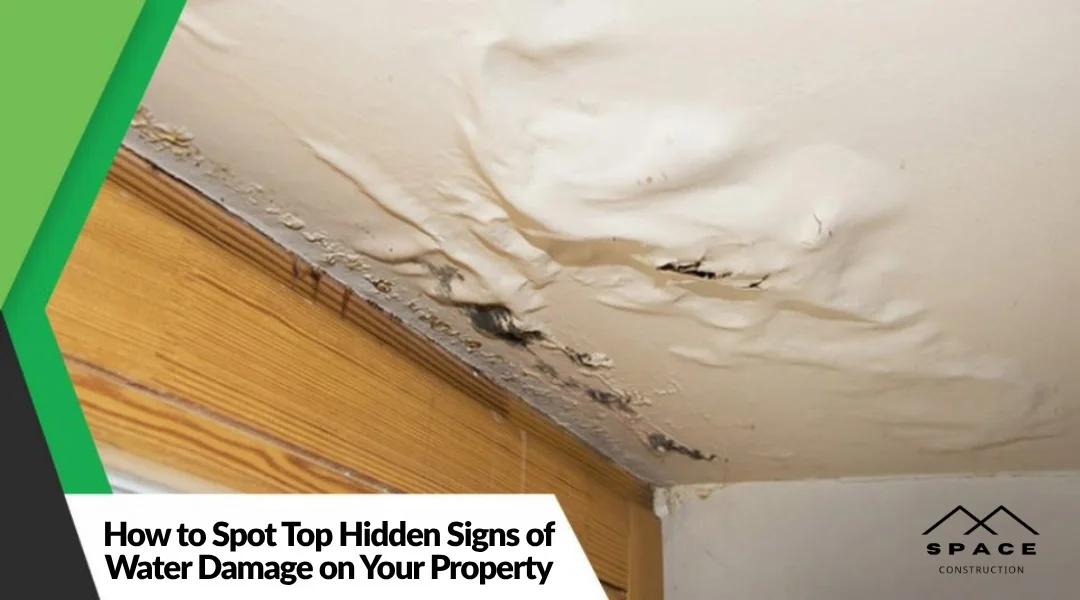
0 Comments